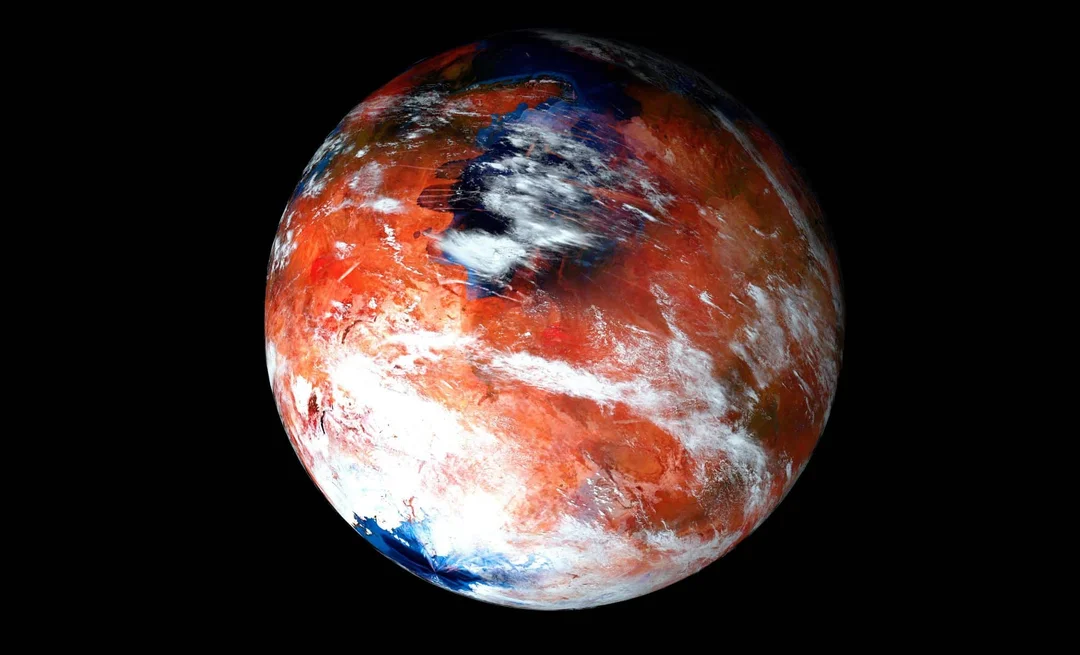
Massive Water Reservoir Discovered on Mars: Could This Red Sea-Sized Deposit Reshape Space Exploration?
The quest to unravel the mysteries of Mars just took a giant leap forward. New evidence suggests an enormous water reservoir, comparable to Earth's Red Sea, lies hidden beneath the Martian surface. This groundbreaking discovery, thanks to the European Space Agency’s (ESA) Mars Advanced Radar for Subsurface and Ionospheric Sounding (MARSIS), could revolutionize our understanding of the planet's past and future potential.
Hidden Beneath the Medusae Fossae Formation (MFF)
Scientists have pinpointed an extensive, ice-rich deposit lurking beneath the Medusae Fossae Formation (MFF), a significant geological feature near Mars’ equator. This reservoir plunges to depths of 2.7 kilometers, dwarfing previous estimates and potentially holding enough water to submerge the entire Martian surface under 2.7 meters of water.
"We revisited the MFF using recent data from Mars Express’ MARSIS radar and discovered the deposits were even thicker than we originally thought," explains Thomas Watters, lead author of the study and researcher at the Smithsonian Institution. This finding has profound implications, particularly regarding Mars’ potential to support future human missions.

Solving the Mystery of Martian Water Loss
The discovery complements earlier research that sought to explain why Mars transformed into a desert landscape. The finding from The University of Texas at Austin revealed a vital link: rain-fed lakes on the surface connecting to a deep underground groundwater reservoir. Water’s journey from surface to aquifer was slow, lasting between 50-200 years. Once the water reached underground its fate was sealed; it would not return to the surface again. "Once water got into the ground on Mars, it was as good as gone," said Eric Hiatt from the University of Texas at Austin.

Implications for Future Exploration
The presence of such vast water resources holds strategic significance for future Mars missions. Astronauts could potentially utilize this Martian water for drinking, oxygen production, and even fuel generation – drastically reducing reliance on Earth-supplied materials. While the MFF’s dusty surface poses serious landing challenges, scientists see unique opportunities in the dust itself, which may have shaped the Martian atmosphere for millions of years.
As Colin Wilson from ESA aptly puts it, “When did these ice deposits form, and what was Mars like during that time?” Answering this is now pivotal as we advance technologies to explore the Red Planet.
The Allure of Ancient Aquifers
The research also emphasizes the importance of Mars's hidden aquifers. Studies show that Martian water cycle dynamics led surface water to become ephemeral, quickly losing water into the crust. This suggests future missions could drill as deep as one kilometer to sample these ancient aquifers, providing invaluable insights into Mars's hydrological history and potential resources for human settlers.
A New Chapter in Martian Exploration
The discovery of this Red Sea-sized water reservoir not only enhances our understanding of Mars's past but also significantly boosts prospects for future human settlement. Questions arise: What is the exact composition of this Martian ice? How can we access it sustainably? And what other secrets does Mars still hold beneath its dusty surface?
What do you think about this massive discovery? Will this accelerate our plans for establishing a permanent base on Mars? Share your thoughts and predictions in the comments below!